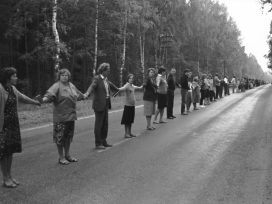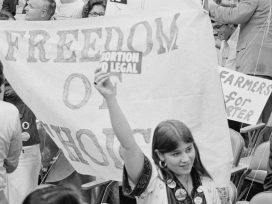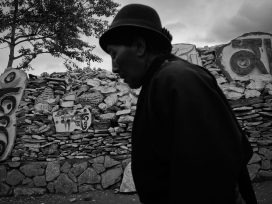The collapse of Soviet-style communism in central and eastern Europe has widely been interpreted as a major step towards the rise of human rights as a global language of morality and protest. Hardly anyone saw it as a success for the rights of women. For British peace activist Mary Kaldor, ‘[o]ne of the most remarkable characteristics of the post-Cold War world’ was ‘its maleness. Turning on the television screen, I am continually struck by the serried ranks of men – male defence experts, male politicians, male soldiers, male hardliners in the Communist Party of the Soviet Union. Even the representatives of the new democracies in Central Europe are all men.’
When the number of women in central and east European governments and parliaments dropped sharply after 1989, access to abortion was restricted and childcare facilities were slashed, ‘many feminist scholars and activists’, Małgorzata Fidelis notes, ‘decried the post-communist system as being particularly discriminatory towards women.’
Some authors believe that there was a causal relationship between the prominence of human rights in the revolutions of 1989 and the lack of a struggle for the rights of women. Writing about human rights more broadly, Carola Sachse argued that human rights language put activists for the rights of women at a systemic disadvantage. On the one hand, activists for women’s rights had to adopt a human rights language that is focused on the universal equality of individual human beings irrespective of their gender, race or class; on the other hand, these same activists had to insist on gender specific differences of women as a group to make the forms of repression they suffer – sexual abuse, sex trafficking, discrimination – visible as a violation of human rights.
In line with this view, Shana Penn writes that among the dissident movements ‘a thinking was widespread that was focused on human rights and generally did not differentiate according to gender, ethnic background and class’ and that women were therefore unable to express their concerns. Discussing Czech women’s literature, Madelaine Hron even writes that under communism, women’s ‘gendered, individual concerns were erased by the language of the universal human rights’.
This paradox of human rights is at the centre of the following essay. It focuses on central protagonists both of the revolutions of 1989 and the rise of human rights in the late twentieth century – the so-called ‘dissidents’. While women were very active in dissident movements, they frequently assumed an auxiliary, heavily gendered, and subordinate position to the men who dominated these movements. Human rights language was partly responsible for sustaining or at least concealing these gender hierarchies, but there was nothing inherent in it that prevented it from being used for the cause of particular groups. If human rights language was not used for women’s rights, this had more to do with how it was ‘vernacularized’ during the 1970s and 1980s by both the dissidents and their international supporters. But while the transnational and regional vernacularization of human rights helps understand why human rights were not used to attack gender hierarchies, the existence of these hierarchies resulted from factors specific to the Soviet bloc – an unspoken consensus among dissidents and their rulers on gender roles.
Both the gender history of communism and the history of human rights have become a growth industry of sorts in recent years. But whereas the former has largely focused on the 1950s, the latter has overwhelmingly ignored gender issues. And while a differentiated social and cultural history of dissent is slowly emerging, it too has largely ignored the gender of dissent. This article thus ventures into territory unchartered by historians. Its main aim is thus to present hypotheses that might stimulate further research, not to provide ironclad conclusions.
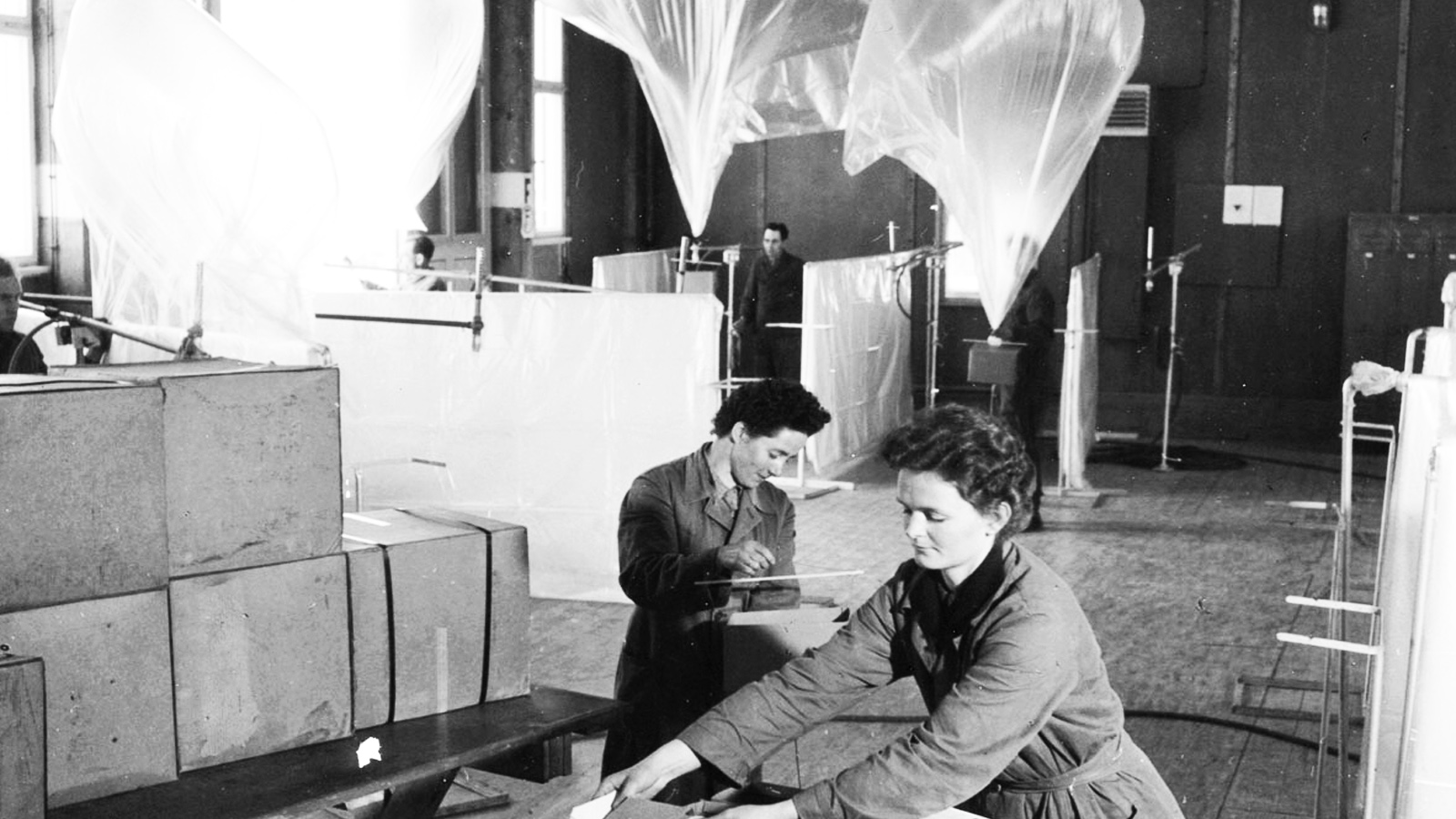
Female workers of Radio Free Europe prepare balloons carrying propoganda materials in 1954 in the Federal Republic of Germany, Photo via fortepan.hu
The gender history of dissent
The terms ‘dissent’ and ‘dissidence’ are somewhat controversial among historians of central and eastern Europe. For one, they were Western labels, which many independent intellectuals in the region disliked. Moreover, they implied a dichotomous view of state socialist societies in which only the representatives of the all-powerful system and the courageous few who resisted it were relevant. The experience of society at large was reduced to compliance and apathy. Extensive historical research, however, has shown that society shaped the history of the communist systems more than the small group of dissidents ever did. Yet precisely by highlighting how social life within the structures of the communist party state was radically more complex and dynamic than the theory of totalitarianism suggests, this research has confirmed the usefulness of the term ‘dissent’. The party states of eastern Europe and the Soviet Union could accommodate complex social dynamics but they could not tolerate the public and deliberate manifestation of political disagreement, that is, of dissent or dissidence. Whatever simplifications came to be associated with the term ‘dissent’, it is a very appropriate term for the political practices that are the subject of this article. Following Detlef Pollack and Jan Wielgohs, ‘dissent’ or ‘dissidence’ are thus defined as ‘all discourses and activities that were critical of the regime and that constituted, or wished to constitute, an autonomous sphere of public, political and cultural communication outside of the official institutions of the party state and which in so doing openly denied the claim of the regime to full control of public life’.
With the exception of the Soviet dissident movement and the later period of Solidarity in Poland, we lack fine-grained gender histories of dissent. What we do know about this aspect, however, suggests that, by the standards of the time (about which more below) the dissident movements were comparatively diverse in gender terms. Men were significantly overrepresented in them and they dominated their leadership. Women did, however, participate broadly and made crucial contributions. They were particularly active in the Soviet dissident movement. In January 1968, the Moscow dissidents Lariza Bogoraz and Pavel Litvinov pioneered what would become a central political practice of the dissident movement in the entire Soviet bloc – an appeal to world public opinion to intervene against a political trial. Later that year, Natalya Gorbanevskaya became the unofficial editor of the newly-founded Chronicle of Current Events, a template for human rights publications elsewhere in the Soviet bloc. In May 1969, Gorbanevskaya and Tatyana Velikanova were among the founding members of the Soviet Bloc’s first non-official human rights group – the Initiative Group for the Defence of Human Rights in the USSR. After 1974, Velikanova became a central activist of a revival of the Soviet dissident and human rights movement after it had been badly hit by a KGB crackdown. Her energetic leadership made sure that the Chronicle of Current Events was published unintermittingly until the Soviet authorities moved to repress dissidence in the early 1980s. Beyond these better known figures, numerous women supported political prisoners, helped produce samizdat, and informed western correspondents on political trials or prison conditions.

Women of Charter ’77. Photo via Česká televize Credits: Olgy Sommerové
Women also played a certain role in Charter 77, an informal initiative of Czechoslovak citizens to monitor their government’s compliance with the UN human rights treaties and the Helsinki Final Act. Among the Charter’s rotating group of three spokespersons there was almost always at least one woman, and Dana Němcová is widely considered as the ‘mother of the Charter’, as Shana Penn observes.
In Poland, the situation looked somewhat different. Female membership in the human rights organisations of the second half of the 1970s was very small and despite her central role for the creation of Solidarity, the worker-activist Anna Walentynowicz was an exception among Solidarity’s almost all-male leadership. As was the case in the USSR and Czechoslovakia, however, women played a central role behind the scenes, doing work for political prisoners, sustaining informal networks, and most of all producing samizdat. Moreover, the mostly female textile workers of Łódź repeatedly staged successful strikes and protest marches. With the imposition of martial law in December 1981 and the arrest of thousands of activists, women came to assume a central role in Poland’s underground society. An important part of Solidarity’s underground networks was run by women as was the Tygodnik Mazowsze, the longest running samizdat newspaper of Poland and the most professional one in the Soviet Bloc.
Despite this broad female participation, however, relations between the genders seem to have been structured with clear hierarchies. Women were expected to contribute what men considered to be ‘typically female’ tasks and to juggle these with what men considered to be ‘female responsibilities’ – childcare and household work. Moscow’s circles of independent intellectuals – the seedbed for the latter dissident movement – featured quite a number of women. But when these groups met in private flats, women were usually expected to play the hosts, preparing and serving drinks and food while the men discussed. A woman who wanted to participate in these circles thus faced the daunting triple burden of having to work full time, take care of the children and household, and do the reading that formed the basis of the discussions during the meetings of the circles.
Paths into oppositional activity were also often structured by gender hierarchies: Bogoraz became a dissident because she chose to stand by her arrested husband, the writer Julij Daniel. Despite the fact that she had already decided to divorce the notoriously unfaithful Daniel, the reasoning behind her support was that a ‘political prisoner needs his wife’. A large chunk of female work in the Soviet dissident movement consisted in support for arrested husbands – informing sympathetic Soviet citizens and western correspondents about the prisoners’ plight and providing for their welfare. As the dissident movement and thus the number of political prisoners grew, entire networks of support for incarcerated activists emerged. In the early 1970s, they received major financial support when Aleksandr Solzhenitsyn donated the Nobel Prize money for a fund for political prisoners. These networks were overwhelmingly run by women. ‘Rusk, cookies, funds’ were thus central activities of female oppositionists in the Soviet Union. Gender roles not only assigned specific activities but could even bar women from becoming dissidents in the first place. An imprisoned man was seen as a martyr for a noble cause; a woman, a bad mother who abandoned her children. Such perceptions were reinforced by a state that was less willing to crack down on women than on men. In the imagery of the dissident movement, men were thus often compared to soldiers at the front and women to their wives waiting for them and supporting them from home.
A similar situation seems to have prevailed in Poland. In 1970s Warsaw, for instance, Jacek Kuroń’s wife Gaja faced the same triple burden the wives of Soviet dissidents had to bear, with the difference that her salary was also the family’s sole income. The couple Zofia and Zbigniew Romaszewski were among the most active in Poland’s dissident and opposition movement. Among others, they founded the Polish Helsinki Committee and drafted an extensive report on human rights violations for the Madrid follow-up meeting of the Conference on Security and Cooperation in Europe. But, while they shared the workload, Zbigniew became the Committee’s chairman and was later elected into Solidarity’s board. Echoing the sentiments of Soviet female dissidents, moreover, Zofia Romaszewski retrospectively said she would not have become an opposition activist if she’d had a young child at the time. No similar thought seems to have crossed Zbigniew’s mind.
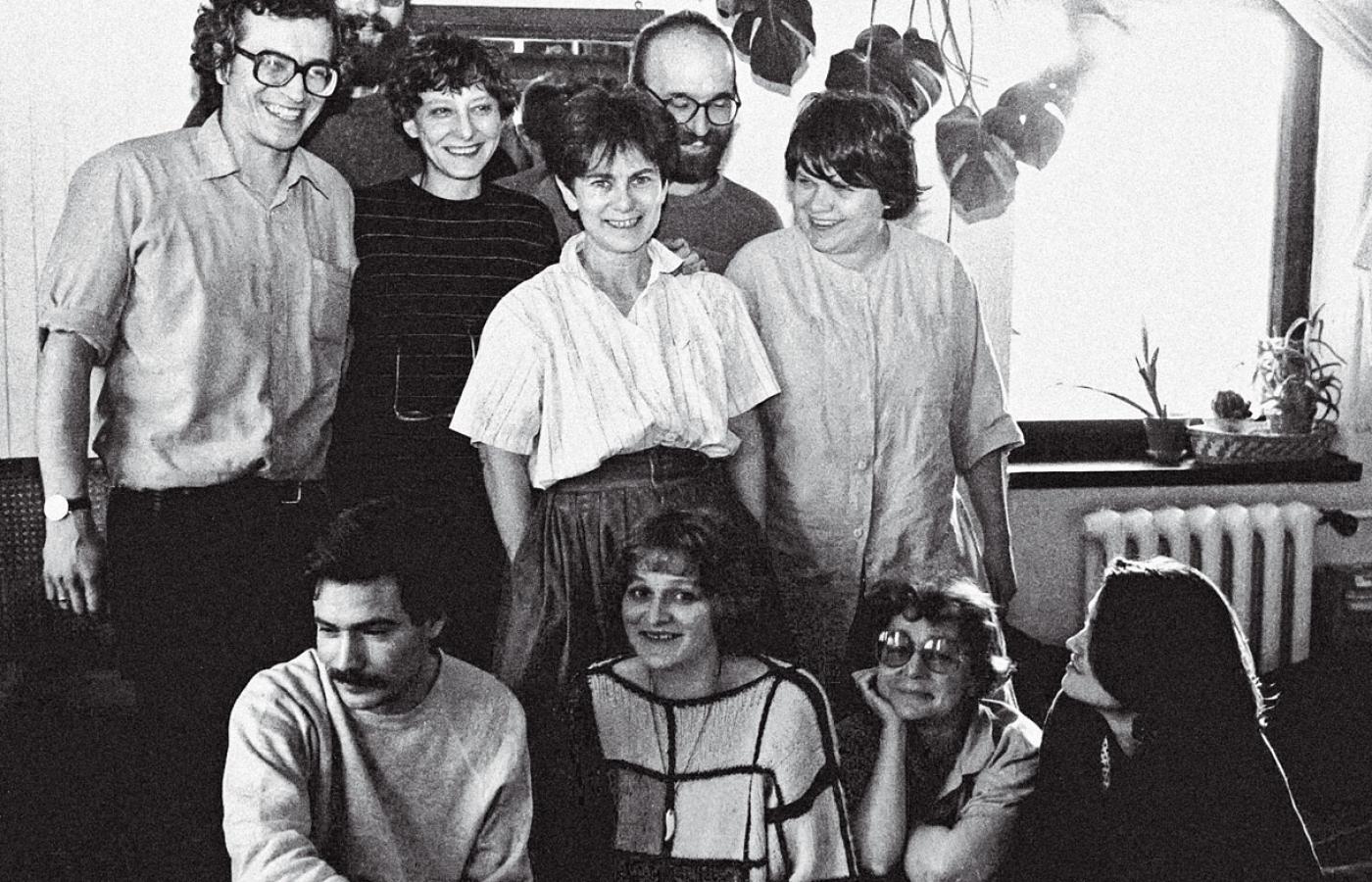
The team of Tygodnik Mazowsze in 1988: Wojciech Kamiński, Tomasz Burski, Joanna Szczęsna, Helena Łuczywo, Piotr Pacewicz, Anna Bikont, Krzysztof Leski, Marta Woydt, Zofia Bydlińska-Czernuszczyk and Olga Iwaniak. Photo via polityka.pl Credits: Anna Pietruszko / Forum.
These gender hierarchies were often backed-up by deeply internalized stereotypes and a profound disdain for feminism. When Kuroń tried to calm a group of striking, largely female, workers in August 1981, he found himself frustrated by what he believed was the women’s inability and unwillingness to listen to rational arguments. In April 1986, he met two female activists of West Germany’s Green Party. According to the latter’s report, they spent an entire night in a lively and overall very friendly debate with Kuroń despite the fact that he repeatedly attacked the Western Women’s Movement, arguing it threatened to destroy true love. Kuroń was, notably, a secular leftwing intellectual who, despite his rants against feminism, left the West German women deeply impressed. The majority of Solidarity’s members were devout Catholics who had grown up in Poland’s still very traditional countryside. Unsurprisingly, then, women in the Polish opposition overwhelmingly worked either on auxiliary tasks such as typing or editing samizdat or in support of imprisoned husbands. A mere eight per cent of Solidarity’s leadership was female, even though women made up around half of Solidarity’s membership. Notably, the women who ran Tygodnik Mazowsze did not consider their newspaper as their own project but merely as a mouthpiece for Solidarity’s all-male underground leadership. On the few occasions when women did protest as women, they did so in ascribed gender roles. In July 1981, workers in Łódź protested against nationwide supply shortages. The most potent part of these protests was a demonstration of several thousand women ‘pushing strollers and carrying children’. As the traditional caretakers of Polish homes, they could most credibly represent the plight caused by the material shortages.
We lack similar accounts of Charter 77. But, while work by Penn suggests that the situation there was slightly more representative of actual gender relations, it appears that there too women largely served in auxiliary roles. Moreover, the clearest criticism of feminism came from within Charter 77. In 1985, Václav Havel published ‘Anatomy of a Reticence’, a long essay in which he explained to the western Left why many dissidents and ordinary citizens of the Soviet Bloc were so unwilling to engage in peace activism. Among others, he recounted how ‘two appealing young Italian women’ came to Prague to collect signatures from women in the East and West under a petition demanding disarmament and human rights. Havel did little to hide his attitude towards this project. He described the Italian peace activists as ‘touching: they could easily have been cruising the Mediterranean on yachts with wealthy husbands (they could surely have found some) – yet here they were, rattling around Europe, trying to make the world better.’ He later wrote that he did not want to ‘ridicule feminism’ and was ‘prepared to believe that it is far from being the invention of a few hysterical women, bored housewives, or cast-off mistresses’. But despite the situation of women being worse in Czechoslovakia than in the West, in Central Europe ‘feminism seems simply “dada”’.
Another way in which the reality of state socialism may have reinforced unfavourable attitudes towards feminism was the reality of a life spent in what Havel called ‘a neurotic world of constant fear of the doorbell’. Anke Stephan documents how the constant threat of repression put the dissidents under enormous, at times unbearable, stress. Socially ostracised and in constant anxiety, the dissidents came to see family ties and marital bonds as a necessary safe haven, leading many of them to abandon their erstwhile support for free love. But even if the dissidents’ disdain for feminism may have been the result of repression and the ideologization of public life, the gender history of state socialism suggests that anti-feminism may have evolved as much out of the system as it was formulated against it.
In sum, Mary Kaldor was certainly not too far off the mark writing that ‘antipolitics in Eastern Europe was predominantly male’. Dissidence would have been unthinkable without the substantial contribution of women, but gender relations were governed by clear hierarchies and the movements’ leaderships were dominated by men. Leading dissidents, moreover, seem to have considered the struggle for women’s rights as a dangerous and even laughable social experiment.
Human rights and the rights of women
Given the clear gender hierarchies before and after 1989, many western analysts were puzzled by the fact that very few women came to understand their social position in gendered terms. An often-heard explanation for this state of affairs is that human rights, with its focus on equality, somehow discouraged the struggle for the rights of women as a particular group. These arguments are only superficially convincing. In our own time, after all, women as well as homosexuals have very successfully used human rights language to campaign for their concerns. The core idea of human rights is simply that there are some goods to which all people are entitled by the sheer fact that they are human beings. What these goods are – political or social rights or both – and how they can be claimed depended fundamentally on how human rights language was ‘vernacularized’ by historical actors.
Human rights movements, moreover, emerged only when the specific rights of a significantly large group of people were violated – political prisoners, victims of torture, intellectuals whose freedom to express their views was curtailed. The growth of Amnesty International, Jan Eckel demonstrates, was based on the perception of torture as a worldwide epidemic. Much as individual cases of torture helped to emotionalize Amnesty’s campaign, its underlying logic was that there is a growing group of people who were subject to torture. In addition to Chile, the most iconic human rights cause of the late twentieth century was without a doubt the struggle of black South Africans against Apartheid.
Dissident activism also focused on how the human rights of particular groups were violated. The Charter 77 spoke of ‘tens of thousands of citizens’ who became ‘victims of Apartheid’ because their convictions differed from those of the state. It also mentioned one of the most important issues around which the dissidents’ human rights struggle crystallized – religious freedom. In fact, the first group in the Soviet Bloc that understood the potential of human rights arguments was the Catholic Church in Poland. In the early 1960s, the Polish Church invoked its members’ individual rights to religious freedom to demand that it be allowed to conduct religious instruction in state schools. The formation of the first human rights groups in the Soviet Union triggered the creation of additional committees including an Initiative to Defend the Rights of Disabled People, a trade union, and a Christian Committee to Defend the Rights of Believers, while ethnic groups like Lithuanians and Crimean Tartars began adopting human rights language. Spin-offs from the Chronicle of Current Events included bulletins by religious groups and Soviet nationalities, and any given issue of the Chronicle itself would document a number of cases in which people were persecuted because they had demanded the rights of religious or ethnic groups. One of the most salient human rights disputes in East-West relations concerned the emigration of Soviet Jews.
There is, then, nothing inherent in human rights that precludes them from being used to advance the rights of specific groups. In fact, the only time human rights triggered an actual social movement in eastern Europe – in Poland in 1980 – was when they were used to reformulate the grievances of a particular social group: the country’s industrial working class. The Polish case also draws into question another explanation for the lack of women’s rights activism in the Soviet bloc: claiming to have implemented women’s rights, the regimes of the Soviet Bloc, this explanation suggests, had discredited the struggle for these rights. This argument ignores that dissents’ relative success consisted in its strategy of what Ben Nathans has called ‘radical civil disobedience’, of showing how the communist regimes violated their own norms. That was why the creation of an independent trade union in Poland was so powerful and damning for Soviet-style communism – it struck at the very heart of the regime’s claim to legitimacy. In the late 1980s, a group of younger activists staged a very successful campaign by exposing the hollowness of the authorities’ claim to work towards peace.
In sum, if we want to understand why gender hierarchies went unchallenged in the dissident movements, the answer does not lie in human rights themselves but in how they were vernacularized in the 1970s and 1980s by the dissidents and their international supporters. The following two sections discuss this process.
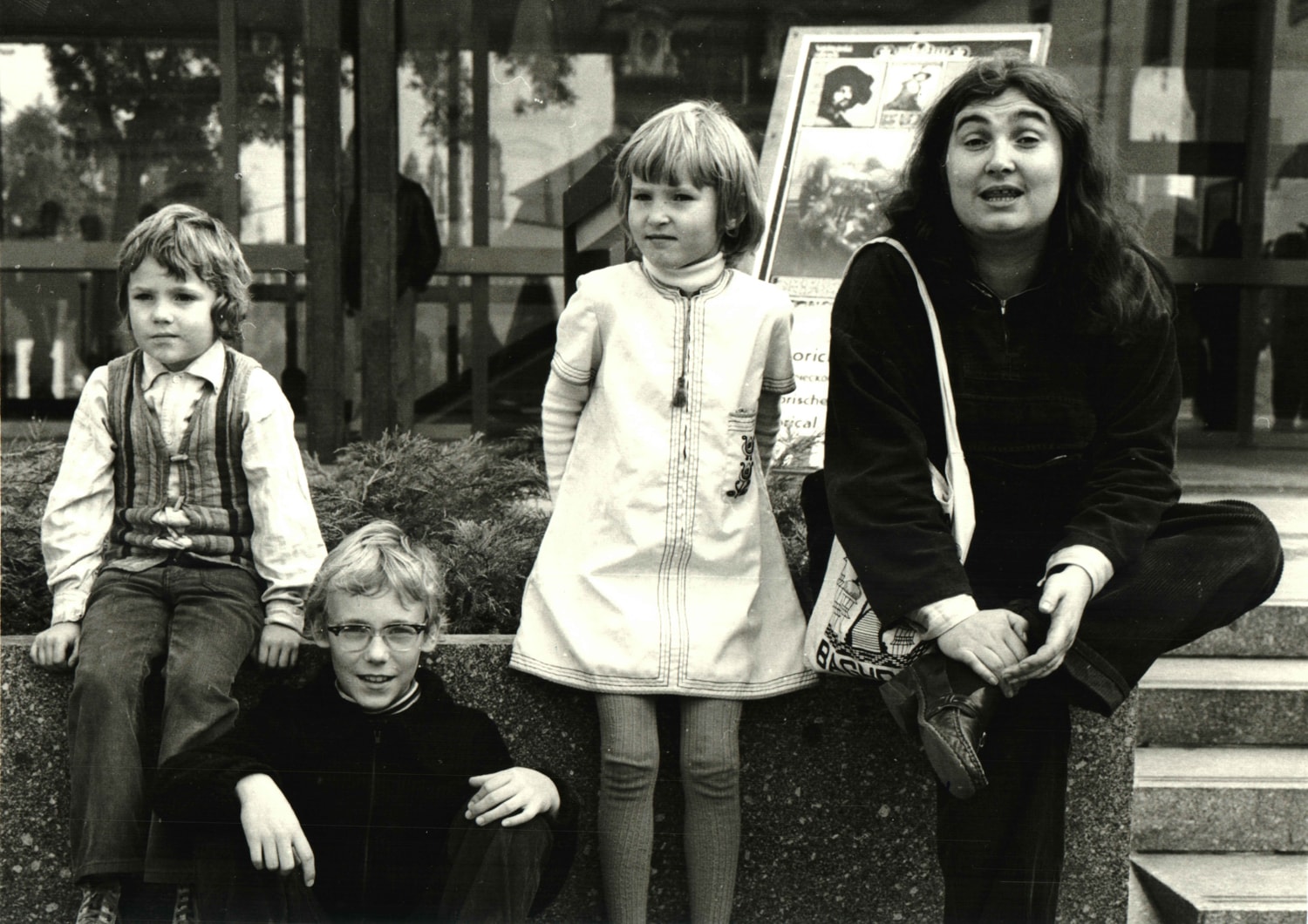
Charter 77 spokesperson Petruška Šustrová with her children. Photo via RFE by Jiri Bednar/ Libri Prohibiti.
Feminism in the dissident vernacular
Leszek Kołakowski, Aleksandr Solzhenitsyn, Adam Michnik, and Václav Havel all shared the belief that the power of the totalitarian system in its 1970s form rested on its ability to saturate public life with ritualised ideological lies, a point made famously in Havel’s meditation on ‘The Power of the Powerless’. Dissent was thus characterised by a complete rejection of all things utopian. Any social blueprint or political programme that would restrict individual liberty for the sake of a radiant future or some collective ideals was discarded. Yet this rejection of ideologies, of what we would now call ‘metanarratives’, did not turn the dissidents into postmodernists avant la lettre. Their quest for individual autonomy and liberty was not a quest to live any kind of life but a life in truth.
Given the dissidents’ rejection of ideology and their commitment to an objective truth, their writings often had strongly religious connotations. This is most obvious in the case of Solzhenitsyn or Catholic activists like Tadeusz Mazowiecki in Poland and Václav Benda in Czechoslovakia. But even an intellectual like Kuroń, a former communist and lifelong non-believer, discovered religion as a conceptual grounding in a social world characterized by state arbitrariness and the pressure to publicly conform to obvious nonsense.
Havel, too, never considered himself a Christian and only very reluctantly, if at all, used the word ‘God’ in his philosophical essays. But his writings have clear religious references nonetheless. In ‘Politics and Conscience’ (1984), he compared totalitarianism to a smokestack he had seen as a boy. This ‘soiling of the heavens’ had offended him because it seemed to ‘arbitrarily disrupt […] the natural order of things’. He felt his revulsion so deeply because, as a boy, he was still deeply rooted in ‘the natural world’, or Lebenswelt, that is, the world of one’s ‘direct personal experience’, a world that ‘functions and is generally possible at all only because there is something beyond its horizon, something beyond or above it that might escape our understanding and our grasp but, for just that reason, firmly grounds this world, bestows upon it its order and measure, and is the hidden source of all the rules, customs, commandments, prohibitions, and norms that hold within it’. For Havel, the crime of totalitarianism was that it denied this wider horizon in the name of a pseudo-scientific ideology and therefore colonised the ‘natural world’ submitting it to ‘the irrational momentum of anonymous, impersonal, and inhuman power – the power of ideologies, systems, apparatus, bureaucracy, artificial languages, and political slogans’. Resistance to totalitarianism thus meant to ‘honour with the humility of the wise the limits of that natural world and the mystery which lies beyond them, admitting that there is something in the order of being which evidently exceeds all our competence’.
Havel returned to this theme in ‘Anatomy of a Reticence’ where he again warned of the danger of utopian projects, fanatics despairing before the ‘spectacle of life’s outrageous chaos and mysterious fecundity’, people who ‘could no longer perceive the integrity of all that exists, and can see only [their] own dream of what should be’. The rationalist models of these utopian fanatics, Havel went on, often combined with an ‘emotional enthusiasm’ and an exaggerated sense of the importance of one’s cause. He went on to contrast this utopianism with what he saw as a profound central European scepticism towards all kinds of utopian projects and a sense of self-irony and the ability to not take one’s aims too seriously, including even a project like the Charter 77, which contrasted sharply with the radicals’ sense of self-righteousness. The example Havel chose to illustrate his point was the aforementioned unsuccessful attempt of ‘two appealing young Italian women’ to collect signatures from women in East and West for a petition demanding disarmament and human rights. The stark and open rejection of Prague’s female dissidents to sign the petition, Havel believed, evolved out of their central European scepticism and sense of self-irony. They feared, Havel wrote, looking ridiculous.
Feminism, Havel thus suggested, was a prime example of the potentially totalitarian and – in its exaggerated sense of dignity – ridiculous attempt to control the necessary chaos of life. Its proponents were people who could not see the ‘integrity of existence’ anymore. It contradicted the ‘authentic life’, the ‘natural world’ Havel wanted to reclaim against the lies of the post-totalitarian system. But why did the dissidents see gender roles as part of the ‘natural world’ they wanted to defend against the totalitarian system? Why did they see feminism as a threat to an authentic human life or, in Kuroń’s words, to ‘true love’? In Havel’s mind, this attitude was a response to the omnipresence of ideology in people’s everyday lives and to the way it had emptied the struggle for equality of all meanings. In this sense, then, anti-feminism was a response to the communist system.
Gender and the transnational vernacularization of human rights
Human rights was (and remains) an international language. It presupposes the existence of a ‘court of world opinion’ with a shared set of norms before which victims of repression can bring their plight and demand redress. The dissidents, with their appeals to UN documents and the Helsinki Accords, had a major impact on the emergence of this imagery of a universal court. The former Czech dissident Jiřina Šiklová thus said that Charter 77 was no social movement but more like a Greek ‘chorus’ performing before a public consisting of other opposition figures but crucially also of western human rights groups.
Dissident activism was thus unthinkable without the support of western correspondents and international human rights groups both of which amplified the dissidents’ appeals internationally as well as western governments who would use mechanisms like the Helsinki process to pressure communist governments to respect the dissidents’ rights.
The international interlocutors of the dissidents came almost exclusively from Western Europe and the United States, that is, from societies which at the time were not necessarily more gender inclusive than the Soviet Bloc. The percentage of women in the West’s workforce was lower than in the East, women in leading positions were just as rare, and only in Sweden and Finland did women constitute more than 20 per cent of the members of the respective national parliaments; in the UK and France the number was seven and six per cent respectively.
It may thus not be very surprising that the dominant human rights organisation of the 1970s, Amnesty International, seems to have been characterized by the same gender hierarchies as the dissident movements. Women were hugely important both for the organisations of central institutions and its local groups, but Amnesty’s leading positions were overwhelmingly, if not exclusively, staffed by men. It took Amnesty until the late 1980s, moreover, to start paying more attention to women’s rights and, in another striking parallel to dissent, a woman working for Amnesty in the early 2000s reported having encountered ‘some of the most anti-feminist women’ she had ever worked with in the organisation’s International Secretariat.
The issues around which Amnesty created its human rights culture – political incarceration and torture – were also not very conducive to raising gender-related questions. If practices in the Soviet Union and Poland can be extrapolated to other world regions, repressive regimes seem to have been much more reluctant to incarcerate women than men. Gender hierarchies, moreover, barred women from exposing themselves to the risk of being arrested, as noted above. There thus were much fewer women as political prisoners than men. Amnesty’s second major concern of the time, torture, may have led to a similar gender-imbalance. States may have been less willing to torture women, and men who had been tortured would again be seen as martyrs, whereas the kind of abuse many women prisoners suffered – rape – left them too ashamed to speak about their plight.
But it may not only have been the reality of repression that systematically excluded gender-related issues from Amnesty’s sight. Its initial activism was part of a re-envisioning of political incarceration that had much more to do with the desires and values of the organization’s members than the actual situation of victims of repression. Amnesty’s work was deliberately non- or even anti-political; it did not support political prisoners, but prisoners of conscience, people who had been jailed solely because they had manifested a worldview dissenting from the state’s ideology. In theory at least, Amnesty’s work was not driven by political solidarity but by empathy, pity even, with a fellow human being. This shift from solidarity to empathy had not been triggered by changed practices of repression around the world but by how the collapse of ideological projects of revolutionary change had left many western activists disillusioned and yearning for sources of idealism that were uncontroversial. Second-wave feminism, with its focus on overthrowing patriarchal structures, may thus have seemed too indebted to the revolutionary activism Amnesty sought to leave behind.
If Amnesty International provided no incentives for the dissidents to raise gender-related human rights questions, neither did western governments. A major reason why human rights gained such prominence in East-West relations was, as Barbara Keys writes, the desire of some US politicians to ‘reclaim American virtue’, to rebuild an image of America’s essential ‘goodness’ in its struggle with communist tyranny. Bringing up the equality of women – an issue where the US situation was not significantly better than the one in the Soviet Bloc – was hardly a promising strategy to achieve this aim.
When it comes to the western correspondents, it is at least doubtful whether feminist activists would have found an audience among the correspondents that was sympathetic to gender-related issues given what has been said so far about gender-related issues in western politics and human rights activism.
Trying to comprehend the absence of gender-related issues in the activism of the dissidents, in sum, it is important to understand that they interacted with western societies that were not necessarily more inclusive than those the dissidents lived in. Moreover, the dissidents participated in a global human rights discourse which, because of the desires of western human rights activists and the exigencies of the Cold War, systematically excluded the discussion of the rights of women.
An unspoken consensus
Given the predominance of men in the dissident movements it may not come as much of a surprise that, among the 26 people which the Polish opposition sent to the famous roundtable talks in early 1989, there was only one woman. It is important to note, however, that among the 29 members of the government delegation there was also only one woman. Much as the dissidents themselves may have seen their anti-feminism as a response to the ubiquity of ideology in state socialism, then, the roundtable talk suggests that government and opposition agreed on one thing: the status of women.
Authors who see 1989 as a setback for women’s rights seem to focus primarily on the disappearance of social and legal institutions such as abortion rights or childcare facilities. What they miss is the reality of gender-relations in state socialist societies. In Russia, the Bolsheviks had come to power promising full female equality. They implemented a number of political and social measures to grant women equal rights, foster their independence, and increase their full employment. Many of these measures were exported to central and south-eastern Europe after 1945. These measures were motivated both ideologically and by the need to deal with labour shortages and were implemented in an overall very repressive regime. But when women coming from the often utterly poor, war-torn, and fiercely traditional countryside took over typically male jobs in heavy industry, many of them did seem to have experienced a clear sense of upward social mobility.
Yet even though women were much higher represented in the workforce of the Soviet Bloc than in the West, they were still disadvantaged. Men earned significantly more, women rarely, if ever, held leading positions in factories and workplaces, and underlying gender roles hardly changed. Even under Stalinism, official ideology continued to underline female roles as caretakers and housewives. Many husbands, moreover, cared little about the fact that their wives were working as much as they did and contributed little to family life. With childcare facilities chronically underfunded, women were forced to work full-time jobs at home and in their place of work. If anything, these trends intensified in the late-socialist period. ‘Consumer socialism’ was based on a social contract between rulers and ruled – if the latter remained acquiescent, the former would satisfy their consumer needs and not intrude in citizens’ private lives. The family, with the mother as its main caretaker, thus emerged as a sanctuary against government intrusion, a trend reinforced when the authorities scaled back programmes of female employment and criticized them as Stalinist aberrations. In private and public discourse, the traditional family emerged as the antithesis of Stalinist terror.
Politically, women were largely marginalized in the Soviet Bloc. In the Soviet Union of the late-socialist period, they were relatively well represented in the largely powerless local soviets, but never made up more than 29.3 per cent of the membership of the Communist Party of the Soviet Union (CPSU) and only around three per cent of the Central Committee. Between 1945 and Gorbachev’s rise to power in 1985, only one woman became a voting member of the Soviet politburo.
None of this is to say that women had no impact on the history of the Soviet Union and the east European People’s Republics. The work of Małgorzata Fidelis, Katherine Lebow, Celia Donert, and others has shown that, much like society as a whole, women could undermine the state’s aims to control their lives, use the organisations, subjectivities, and niches of the system for their own ends, or at the very least engage in Eigensinn thus shaping the history of state socialism. But as with society as a whole, this influence was exerted indirectly and underneath or against the ruling system rather than from within it.
In contrast to the dissidents’ own rhetoric, then, they did not attack the seeming feminism of official ideology; the gender hierarchies among dissident activists, rather, faithfully reflected hierarchies shaped by the socialist system. More than that, there even seems to have existed something of an unspoken consensus among the dissidents and their governments regarding gender roles. When the east and central European communist parties scaled back the ideological fervour of the Stalinist period, measures that focused on gender equality were among the first to be slashed. The clearest way in which the Kádár regime in Hungary tried to set itself off from the Stalinist period was by granting families greater autonomy. A revival of the family, complete with traditional gender roles, was at the centre of the shift towards consumer socialism, Joanna Goven suggests. This policy had important economic reasons, but it also had a crucial ideological dimension – interfering with family life and its gender divisions was too radical even by the standards of a revolutionary communist state.
Padraic Kenney’s analysis of the gender of factory work in Poland and Paulina Bren’s analysis of the gender roles constructed in 1970s Czechoslovak television series suggest that a similar message was conveyed in these countries, too. The main protagonist of a highly popular Czechoslovak show of the 1970s was not a heroic shock worker, but a woman who ‘heroically’ juggled her responsibilities as a single mother and leading employee of a supermarket, becoming a mother-like figure for the supermarket’s staff in the process. This characterization, Bren argues, reflects how women in late socialism came to be associated almost exclusively with their role as caretakers of socialist families.
The dissidents, to be sure, did not make much of a difference between Stalinism and the later evolution of state socialism. Where the Soviet and east European regimes tried to characterise experimentation with the family and gender roles as an excess of Stalinism, many dissidents came to associate it with socialism as a whole. The unspoken consensus, however, seems to have been that the family should be off limits for ideological experiments. The gender hierarchies characterising dissidence, in other words, were shaped by the very system it rebelled against.
Conclusion
Whatever else ‘1989’ was, it was no great leap forward for the rights of women. Democratization may have established the legal and political institutions for a more efficient campaign for these rights, but it took place within economic conditions making gender equality more difficult and among an, at times, fervently anti-feminist culture. Some authors believe that this state of affairs was the result of a predominantly male dissident movement whose recourse to universal human rights put the struggle for the particular rights of women at a systematic disadvantage. There certainly is something to this argument. The issues around which the transnational discourses of the 1970s and 1980s revolved – torture and political incarceration – systematically excluded gender-related specific forms of repression. The Cold War, the main context for East-West human rights debates, was also no conducive environment for women’s rights. The dissidents came to understand human rights activism as the recovery of a ‘natural world’ soiled and suppressed by false ideological projects, and they came to see feminism as one such project. But even if dissidence did nothing to change gender hierarchies, these hierarchies themselves seem to have been created by socialist systems which also, in Stalinist times, promoted traditional female gender roles and towards their end even came to associate women exclusively with these roles.
In trying to understand the endurance of traditional gender roles among Soviet Bloc dissidents, then, we should be wary of taking the self-description of either the regimes or the dissidents at face value. The regimes of the Soviet Bloc were nowhere near as gender-inclusive as the degree of female employment, the existence of childcare facilities or liberal abortion laws have us believe. And the dissidents’ disdain for the ‘utopianism’ of feminism was nowhere near as clear a break with the regime as they believed. In fact, there seems to have been an unspoken consensus between dissidents and regime about the ‘naturalness’ of perceived gender roles. This consensus seems to have been largely responsible for how human rights language was used to defend workers as well as religious and ethnic groups but not women.
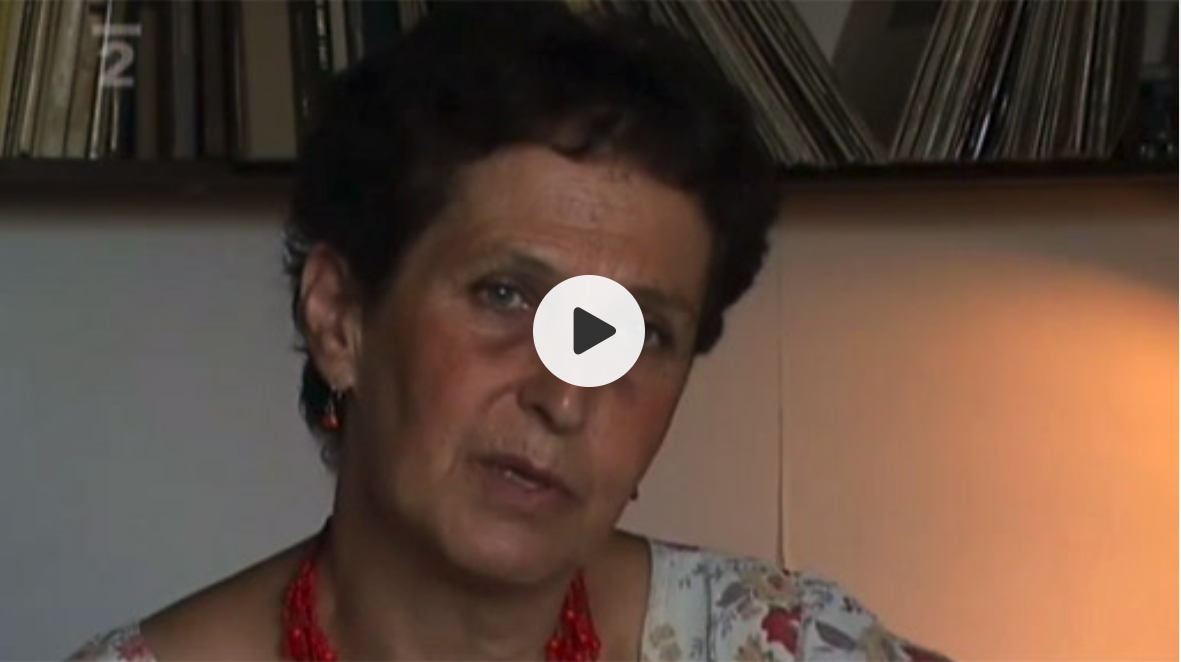
The profile of Věra Roubalová in Ženy Charty 77 (Women of Charter 77.), a documentary series by Olgy Sommerová for Česká televize from 2007.
